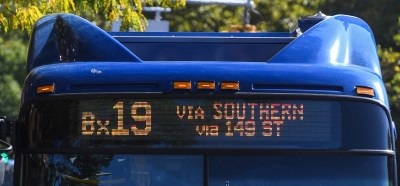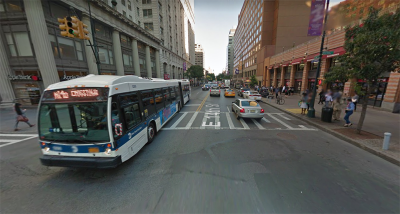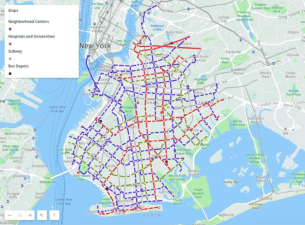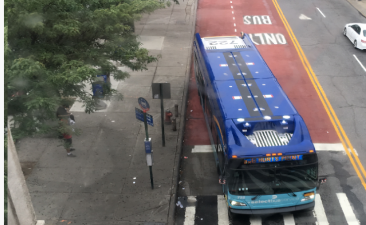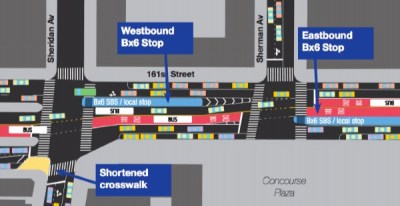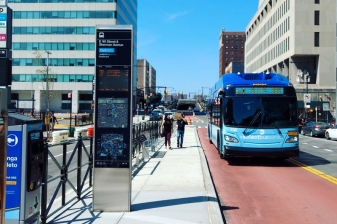Bronx Bus Redesign Spaces Out Stops, Beefs Up Crosstown Service
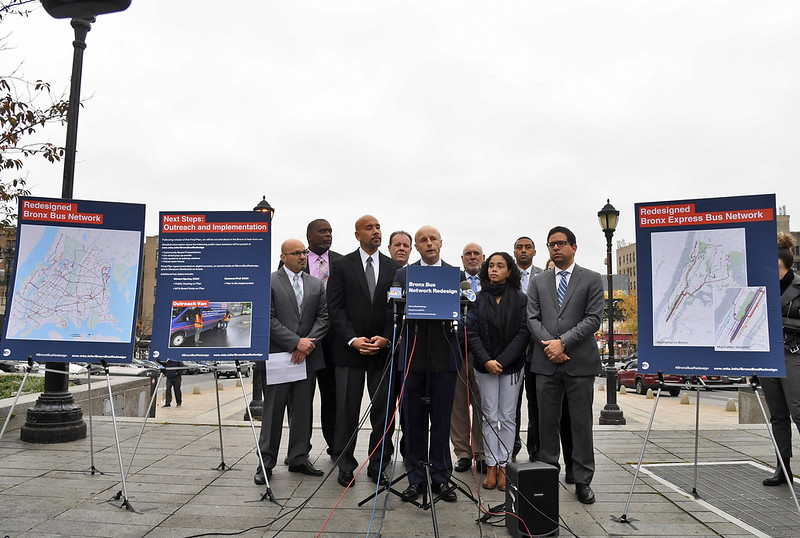
Ladies and gentlemen, the Bronx bus is blooming.
On Tuesday morning, the MTA announced its plan for a redesigned Bronx bus network that reconfigures stops to increase the distance between them and make them more in line with international peer bus systems; adds all-door boarding across the system; plus adds frequency on three crosstown routes, a must-have for a borough with no crosstown subway lines.
It’s an attempt to improve service for the nearly 700,000 bus riders in a borough where 60 percent of residents commute to work using public transportation.
Bus stops in the Bronx average just 882 feet between them, roughly three city blocks apart. Under the redesigned bus network, roughly 400 stops will be eliminated so that the remaining stops are 1,092 feet apart. But the stop elimination will allow buses to move faster, since buses can spend up to minutes attempting to get back into the flow of traffic during peak service hours after making a stop.
Eliminating bus stops can be a politically difficult operation, which the MTA was reminded of when it turned the M14 A/D lines into SBS routes, cutting some stops on the Lower East Side. But the transit agency claims that it managed to thread the needle of making transit advocates happy while also retaining certain stops that serve hospitals, retirement communities or a subway station.
The Bx6, the south Bronx’s SBS route, will also see an adjustment. Where the bus previously brought riders from Washington Heights to the Hunts Point produce market, the route has been tweaked to provide service all the way to Soundview.
The final redesign plan is the result of a year of gathering data, holding visioning sessions, briefing community boards and elected officials, all to make changes to a bus network that the MTA said had been more or less untouched since it replaced the borough’s trolley lines and a handful of private bus networks. A similar redesign has already reshaped the express bus network in Staten Island, and the MTA is currently doing community outreach to reimagine the bus systems in Queens and Brooklyn.
Advocates for better bus service gave the network redesign mixed reviews. Stephanie Burgos-Veras of the Riders Alliance said buses would be faster with the bus stop rebalancing and all-door boarding, but believes the system needs more routes and more-frequent service.
“The frequency numbers were not what we were calling for,” Burgos-Veras said. “We were calling for three-to-five minute frequency on all crosstown bus routes with 10,000 riders during peak hours, and six-to-eight minute frequency on off-peak hours. We shouldn’t have any crosstown buses coming in at 15 minutes at a time, it shows a level of disrespect to bus riders on major crosstown corridors, because they’re waiting longer to get to their destination, and with factors like traffic that 15 minutes can easily become 20 to 25 minutes.”
The redesign of the Staten Island express bus network came with a $10-million investment from the state, the kind of spending that Burgos-Vergas said should be lavished on the Bronx, with its booming development.
“If the MTA doesn’t have the resources to increase the frequency that we need, this redesign won’t change the lives of bus riders,” she said. “This is a time to pressure the governor to put in the money. With so much growth and development taking place in the Bronx, there are no new routes to supplement that growth. we’re not seeing more routes to Hunts Point, to the south Bronx, we’re not seeing new routes that will connect Bronxites to Queens. It’s something we pushed for, but adding routes that bring people to new destinations is something that costs money.”
MTA spokesperson Amanda Kwan said that the focus of the Bronx redesign was building a more frequent all-day network and improving the Bronx bus network’s east-west routes, and that a Bronx-Queens connection could still be on the table while more redesigns are still happening.
“We will continue to monitor service and upcoming developments in the Bronx, and as part of the Queens bus network redesign we’re examining the feasibility of Queens-Bronx routes,” Kwan said.
